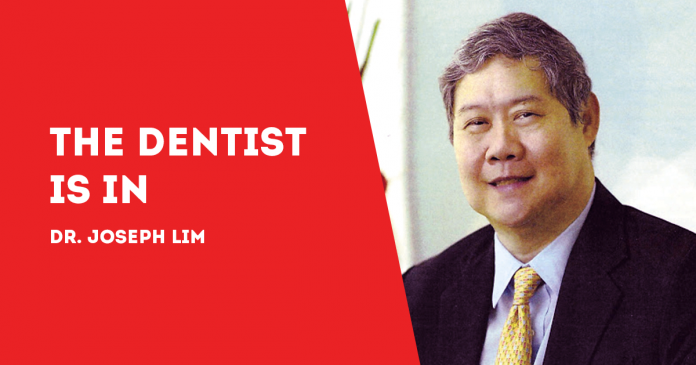
(By Dr. Joseph D. Lim and Dr. Kenneth Lester Lim)
MORE LIKELY than not, you’ve seen it before: Leonardo da Vinci’s Vitruvian Man.
Drawn circa 1490, it shows arms outstretched, in a symmetry inside a circle and a square.
Vitruvius was a Roman engineer who believed the human body is a well-designed, harmonious physique in perfect proportions, a template in constructing buildings.
A dentist has now figured out how da Vinci fit the Vitruvian man inside a circle and a square – in perfect harmony.
Dr. Rory Mac Sweeney of London seems to have the answer to what has been puzzling people for over 500 years: the legs of the Vitruvian man form an equilateral triangle that matches another equilateral triangle in the figure’s human jaw.
Da Vinci put the center of the circle at the man’s nave and the square’s center at his groin, with the limbs stretched into both square and circle.
In fact, in his “Proportions of Man”, Leonardo posit a clue: that “the space between the legs will be an equilateral triangle.”
“I think we’ve all been looking for a complicated answer,” Dr. Mac Sweeney told The Independent newspaper. “The key was in Leonardo’s own words. He was pointing to this triangle all along.”
Dr. Mac Sweeney, in a study published in the Journal of Mathematics and the Arts, proposes that the triangle matches a precise anatomical feature discovered nearly 400 years later: Bonwill’s Triangle.
Another dentist was the first to identify the triangle. In 1864, Dr. William Bonwill showed the geometric relationship governing optimal human jaw function established in 1864, writes Tibi Puiu, a science journalist and co-founder of ZME Science.
The geometric figure is formed by connecting the two points where the lower jaw hinges with the midpoint between the front lower teeth. In most adults, each side of the triangle measures about 10 centimeters, Mr. Puiu points out.
“In modern dentistry, Bonwill’s Triangle is foundational. It’s used to build dentures and understand how the jaw moves efficiently. But Leonardo, it seems, may have foretold its geometry long before X-rays or surgical tools could confirm it,” Mr. Puiu points out.
With the equilateral triangle between the legs of the Vitruvian man, da Vinci illustrated the ratio that is close to what mathematicians call the “tetrahedral ratio”. This is the proportion that arises in the geometry of the simplest three-dimensional shape: the tetrahedron, a pyramid made of four equilateral triangles.
If that sounds complicated (to me it is), Dr. Mac Sweeney explains: “What’s truly amazing is that this one drawing encapsulates a universal rule of design. It shows that the same ‘blueprint’ nature uses for efficient design is at work in the ideal human body.”
Da Vinci “knew, or sensed, that our bodies are built with the same mathematical elegance as the universe around us,” Dr. Mac Sweeney says.
***
Dr. Joseph D. Lim, Ed. D., is the former Associate Dean of the College of Dentistry, University of the East; former Dean, College of Dentistry, National University; Past President and Honorary Fellow of the Asian Oral Implant Academy; Honorary Fellow of the Japan College of Oral Implantologists; Honorary Life Member of the Thai Association of Dental Implantology; and Founding Chairman of the Philippine College of Oral Implantologists. For questions on dental health, e-mail jdlim2008@gmail.com or text 0917-8591515.
***
Dr. Kenneth Lester Lim, BS-MMG, DDM, MSc-OI, graduated Doctor of Dental Medicine, University of the Philippines, College of Dentistry, Manila, 2011; Bachelor of Science in Marketing Management, De la Salle University, Manila, 2002; and Master of Science (MSc.) in Oral Implantology, Goethe University, Frankfurt, Germany, 2019. He is an Associate Professor; Fellow, International Congress of Oral Implantologists; and Fellow, Philippine College of Oral Implantologists. For questions on dental health, e-mail limdentalcenter@gmail.com/PN







